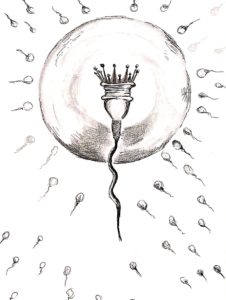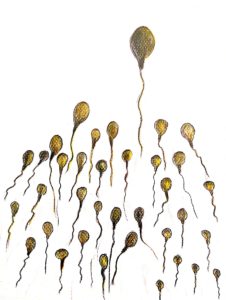In the male reproductive system, the vas deferens act as a canal transports the sperm towards the penis during ejaculation. Congenital Bilateral Absence of the Vas Deferens (CBAVD) is a condition where the vas deferens are missing, thereby blocking the sperm from ever reaching the semen. The sperm are produced but unable to reach their destination naturally, remaining trapped in the testicle. CBAVD itself has no external symptoms, and those with the condition have normal sex lives.
Cystic Fibrosis is a genetic condition that affects multiple organs. Most notably, the lungs and digestive tract are affected and individuals with the condition have trouble breathing and are at a high risk of infections. CF is one of the most common lethal genetic diseases, occurring in about 1 in 3500 newborns. It is a recessive disease, which means that one must carry two copies of the defective gene in order to have CF. An individual with only one copy is known as a carrier.
97% of men with CF also have CBAVD and are born without a vas deferens. However, in most men with CF, the actual sperm production is normal. Men with normal spermatogenesis and CBAVD can, therefore, have biological children through in vitro fertilization: A surgeon can extract sperm directly from the testes and inject them directly in their partner’s extracted eggs.
There are many different possible mutations that can cause CF, all occurring in the gene known as CFTR (CF transmembrane regulator). The specific mutations present, and their subsequent effects, will determine the severity of CF in an individual. For example, in some males, CBAVD will be the only obvious symptom of CF. Because of this possibility, it is important that males are tested for CF once diagnosed with CBAVD.




